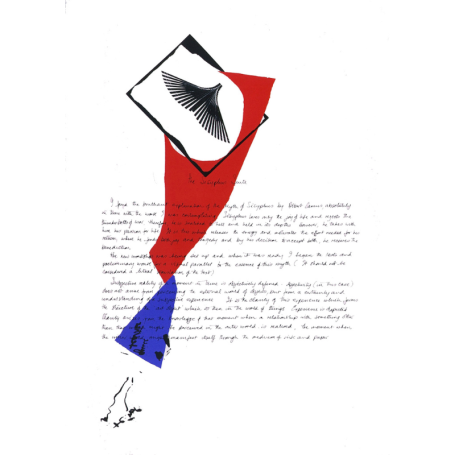The Sisyphus suite
Elstein, in response to Albert Camus’s 1942 philosophical essay The Myth of Sisyphus, created The Sisyphus Suite (1978–80), a series of eight screenprints. Each print was made using screenprint on Arches paper, in an edition of 30, measuring 106 x 78 cm.
In the Greek legend, Sisyphus is condemned for eternity to roll a boulder up a hill, only for it to roll back down each time. Camus drew on this myth to explore themes of individual struggle and the search for meaning in life.
Created during a period of personal upheaval - having relocated several times before finally settling in Manchester - Elstein began work on The Sisyphus Suite as a way to stay connected to the creative process during this time of transition.
At the time of making the work, Elstein wrote:
“I found the brilliant explanation of the Myth of Sisyphus by Albert Camus absolutely in tune with the work I was contemplating... It is the clarity of this experience which forms the structure of the 'art object' which is then in the world of things. Experience is depicted. Clarity arises from the knowledge of that moment when a relationship with something other than that which might be perceived in the outer world is realised — the moment when the inner world might manifest itself through the medium of ink and paper.”







